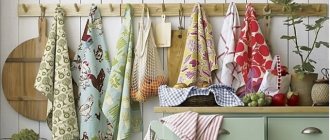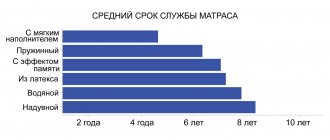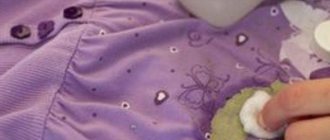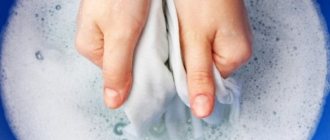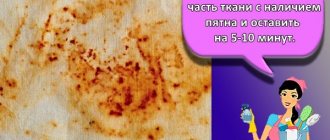Kitchen towel: what is the danger?
A towel is an indispensable accessory in any household. It is used to dry hands, polish plates and other cutlery to a shine, and remove unsightly water stains from them. It is used to dry washed fruits and vegetables, and sometimes to brush crumbs off the table with it, and then, with a clear conscience, hang it on the stove handle or a hook on the wall so that the fabric dries.
- How long does alcohol stay in your body?
- Common causes of autumn allergies
- A new promotion from Pyaterochka, which few people know about
How often do you need to change personal hygiene items?
Many people think that personal care products must be used before their expiration date. Some people change them more often, while others use them for too long. The accuracy of the consumer does not matter here; each thing has its own service life. Let's look at the most basic personal hygiene items that can harm our health if used incorrectly.
Latest Research
The object of research was one hundred kitchen towels. They were in use for a whole month, then bacteriological studies were carried out on them to discover what microorganisms inhabited this piece of kitchen textile. After such active use, many pathogenic microorganisms settled on the towels, but their number was influenced by several factors:
- number of family members who used towels;
- the type of diet that users followed;
- what functions were the towels used for?
The results of the study are impressive: almost half of the subjects studied showed the growth of harmful bacteria. Of the 49%, 36.7% had enterococci, 36.7% coliform bacteria, and 14.3% had Staphylococcus aureus on them. It is worth noting that the latter two types of bacteria were largely represented in areas where a vegetarian diet was not followed.
The number of bacteria was especially huge in large families with many children. In small families, towels were “safer.” Another fact is that there were more microorganisms on those towels that were used for a variety of purposes:
- wiped hands and dishes;
- used as oven mitts to remove hot baking sheets from the oven;
- wiped surfaces.
Towels that were used only for their intended purpose - to dry hands, dry vegetables - did not become such a desirable haven for dangerous bacteria. Scientists also found that far fewer organisms live on dry textiles than on wet textiles.
- What social assistance is available to federal pensioners?
- Korean eggplant salad
- 7 Best Evergreen Ground Covers for Your Garden
It is important to be responsible about the cleanliness and use of kitchen towels. Wet has no place in the kitchen. Also, do not use one towel for many different purposes. Particular attention to hygiene in the kitchen should be paid to those families where there are many children and elderly people.
How many towels should each housewife have in her home?
A towel is one thing you can never have too much of. We will try to determine how many towels a family of three (parents and child) needs to have at a minimum - and each housewife will determine the maximum number of towels based on her needs.
Pixabay Photos
- Bath towels – 6 pcs.
- Face towels – 6 pcs.
- Hand towels – 4 pcs.
- Foot towels – 6 pcs.
- Towels for intimate hygiene – 6 pcs.
- Medium size towels for guests – 2-3 pcs.
- Kitchen towels – 6-7 pcs.
- Kitchen cloth or terry napkins – 6-7 pcs.
- Beach towels – 3 pcs.
- Terry sheets – 3 pcs.
We calculated this number of towels, taking into account the need to change and wash towels - 2 changes for each person.
How often should you change kitchen towels?
Scientists have discovered an unpleasant truth about things that are familiar to us, but there is no need to get upset and panic. Yes, towels can be a real breeding ground for infection, but you can ensure that you can use them without fear. These methods are simple and we can all do them.
You just need to follow simple rules and get into the habit of paying special attention to kitchen textiles. It is worth listening to tips on how often to change kitchen towels:
- Towels in the kitchen and bathrooms should be changed every day. This is essential if you want to protect yourself from foodborne pathogens and other bacteria. For example, you need to change towels every time you dry dishes and wipe down surfaces after dinner.
- Do not throw wet towels into the basket with dirty clothes. Let them dry first, and then you can put them in the basket, or directly into the machine and wash them at the highest temperature.
- You cannot wash kitchen towels with clothes - this is a guaranteed way to “colonize” them with unnecessary bacteria.
Factors to consider when purchasing towels
Photo by Pixabay
Here we will provide the most useful tips that housewives may need when buying high-quality and comfortable towels.
- A good towel is made from cotton thread or linen, cotton fabric. Today you can find towels made from microfiber - they are soft, absorb moisture well, very beautiful and light, but not as durable as towels made from natural materials. Cotton fiber from Egypt has received worldwide recognition - towels made from it are the best.
- Do not buy towels made from mixed fabrics containing up to 50% synthetic fiber. These towels are very pleasant to the touch, beautiful and bright, hold their shape well, are lightweight, and dry quickly. But when wiped, they do not absorb moisture well and “creak” across the body, leaving an unpleasant sensation. In addition, such low quality towels can shed a lot.
- If you are buying towels for travel, opt not for terry towels, but for waffle towels. These towels are much lighter and smaller in volume, but they wipe away moisture very well and are also easy to wash.
- The quality of terry towels (terry sheets and terry robes) is assessed by their density. Towels with a density below 320 g per m2 do not absorb as much moisture as those with a higher density; they quickly become wet, lose their shape, fade, and wear out. If you are buying towels for a bath or shower, bath or sauna, choose samples with a density of at least 470 g per m2. Thicker towels are even stronger, but they are more difficult to wash and dry.
- The pile of terry towels (as well as terry robes) can also vary in height. Too short a towel pile, from 3.5 mm, makes this product quite hard over time, it wears out faster. The very long pile of a terry towel - from 7-8 mm or more, tangles the hair, is pulled out in loops, clings to everything, and accordingly - quickly loses its fluffy beautiful appearance. The most optimal length of terry towel pile is from 4 mm to 5 mm.
- For use in the kitchen, it is better to buy waffle or linen towels rather than terry towels - they are easier to wash and dry faster, they are easy to iron, they retain their appearance longer, absorb moisture well, and wipe dishes without leaving lint on them.
- When purchasing, look carefully at the product labeling. If it says “cotton 100% (M)”, then this is a product with the inclusion of synthetic fibers in cotton. If the marking indicates (PC), the product contains polyestercotton artificial fiber.
- When purchasing, carefully inspect the product - it should be evenly colored, on both sides, and have a silky surface. Pay attention to the smell of the product - normally, a high-quality towel should not smell of chemicals.
- After running your hand over the surface of the product, look at your palm to see if it has become stained with the dyes included in the towel. If the seller allows, it is best to run a white napkin over the surface of the towel - the poor-quality color will be “obvious” immediately.
- If you see soybean fiber (“SPF”, soybean protein fiber) in the towel, then you can safely purchase this product. This type of fiber was developed in South Korea, it contains a substance resulting from the processing of soybean proteins. This fiber dries faster than cotton, and it absorbs moisture much better. Products made from soy fiber cannot be confused with any others - they are very soft, pleasant to the touch, similar to cashmere or silk. Such products must be washed at a temperature no higher than 60 degrees, and then they do not lose their shape and their wonderful properties for a very long time. Soy fiber is a means of preventing inflammation on the skin and aging of the skin.
- Currently, terry products are popular, which contain special fibers - lyocell (Lenzing Lyocell Micro). This fiber is made from eucalyptus wood, it absorbs moisture better, dries much faster than cotton, does not acquire any odors, and does not “absorb” dust particles. Towels with lyocell fiber are very soft to the touch, reminiscent of silk fabric. These towels are washed at a temperature not exceeding 60°C.
Rules for caring for kitchen towels
Basic recommendations for the use and care of kitchen towels:
- Always change kitchen towels if they have been used to wipe down dishes or surfaces that have come into contact with raw meat.
- When washing towels, choose the longest wash cycle at the highest temperature. It is hot water that allows you to better wash out dirt from the fabric, and thus remove microorganisms.
- Do not use fabric softener when washing kitchen towels. It creates an invisible film on the surface of the fabric; contact with food should be avoided.
- Rinse the fabric thoroughly. Cleaning agents may not be easily rinsed out of the fibers. Don't be lazy, turn on an additional rinse cycle.
- Make sure your towels are dry before throwing them into the laundry basket. Warm, dark, damp environments are a haven for harmful microorganisms. In such conditions, the towel will smell musty, and mold may even appear on it. The best option is to let the towel dry overnight and put it in the wash in the morning.
- The more of these kitchen accessories you have, the more often you can afford to replace them. So take a look at your kitchen towels and add new items to your collection.
Washing Tips
The washing mode must be selected based on the manufacturer’s recommendations indicated on the label of the textile product, or based on the composition.
We recommend: How to wash a faux fur item at home?
The optimal temperature when washing towels is 40–50 degrees. This heating of water is quite enough to kill bacteria and germs. If there are stubborn stains, you can increase the temperature to 70 degrees.
Do not forget that not only the service life and appearance of the product, but also the health of your family members depends on a competent approach to the issue of washing towels.

